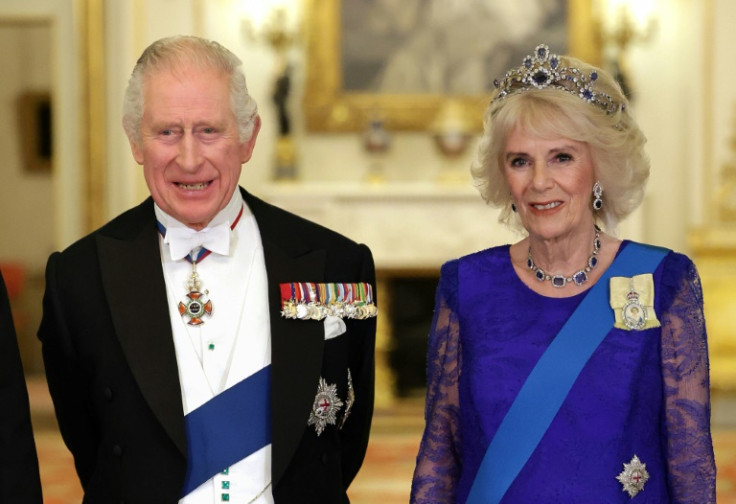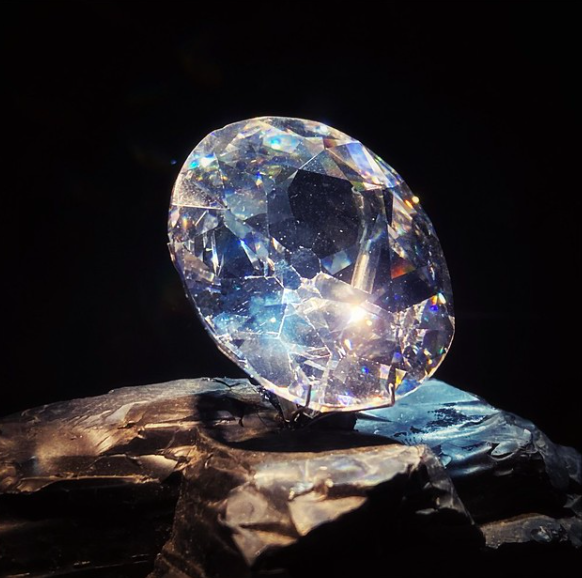Here's Why The Historic Koh-i-Noor Crown Jewel Won't Be Present At King Charles' Coronation

KEY POINTS
- Buckingham Palace confirmed that Queen Consort Camilla will receive and wear Queen Mary's crown
- The historic Koh-i-Noor crown jewel will remain at the Tower of London during the coronation
- The Koh-i-Noor is the controversial diamond in the middle of ownership disputes between countries
King Charles III's coronation will miss one historic crown jewel passed on through generations — the Koh-i-Noor diamond.
While it's unknown where the 105-carat diamond came from, it was rumored to have been found on a bank of Southern India's holy Krishna River around eight centuries ago. It then spent years hidden inside a golden statue beneath a Hindu Temple.
In 1850, the diamond was formally introduced to the British monarchy, and it was often worn by Queen Victoria as a brooch. However, legend has it that the Koh-i-Noor diamond has a curse that could lead male royal family members to face death, betrayal and murder moments after using the jewel, NPR reported. Hence, only female royalties can wear the Koh-i-Noor safely.
King George VI's wife, Queen Elizabeth, reportedly wore the diamond during her coronation in 1973. It was then passed on to her daughter, Queen Elizabeth II. But no records showed her using the diamond during her 70-year reign as a monarch.
If King Charles and his wife, Queen Consort Camilla, were to follow the tradition, the latter would be expected to wear the jewel during Saturday's crowning ceremony before millions of onlookers across the U.K. and worldwide.
However, the 75-year-old queen will be crowned with Queen Marry's crown, which was taken from the Tower of London and specifically resized and reset for the royal. In honor of the late Queen Elizabeth, it will also feature diamonds from her jewelry collection, specifically the Cullinan III, IV, and V.
Koh-i-Noor, which means "mountain of light" in Persian, has been the center of controversy because of ownership disputes that started in 1974 when India was freed from its colonizers, the United Kingdom, according to Town and Country magazine.
Nearby countries such as Pakistan, the Taliban, Iran, and Afghanistan — whose own royals and rulers at one point possessed the diamond over the centuries — have also claimed ownership over the jewel.
Following the death of Queen Elizabeth, who passed away in September last year, India has been fighting to gain possession of the Koh-i-Noor once again and has raised the issue with the British government.
So, to refrain the dispute from further escalating, Buckingham Palace seemingly decided to not include the controversial diamond during Saturday's service at Westminster Abbey to peacefully honor the new monarch of Great Britain.
"Queen Mary's Crown will be used for the Coronation of The Queen Consort at Westminster Abbey," the palace's statement read. "The choice of Queen Mary's Crown by Her Majesty is the first time in recent history that an existing crown will be used for the Coronation of a Consort instead of a new commission being made, in the interests of sustainability and efficiency."
Currently, the Koh-i-Noor is kept in London's World Heritage site named the Tower of London alongside other crown jewels such as the Imperial State Crown, the Black Prince's Ruby and the Sovereign's Scepter with Cross.

© Copyright IBTimes 2025. All rights reserved.






















